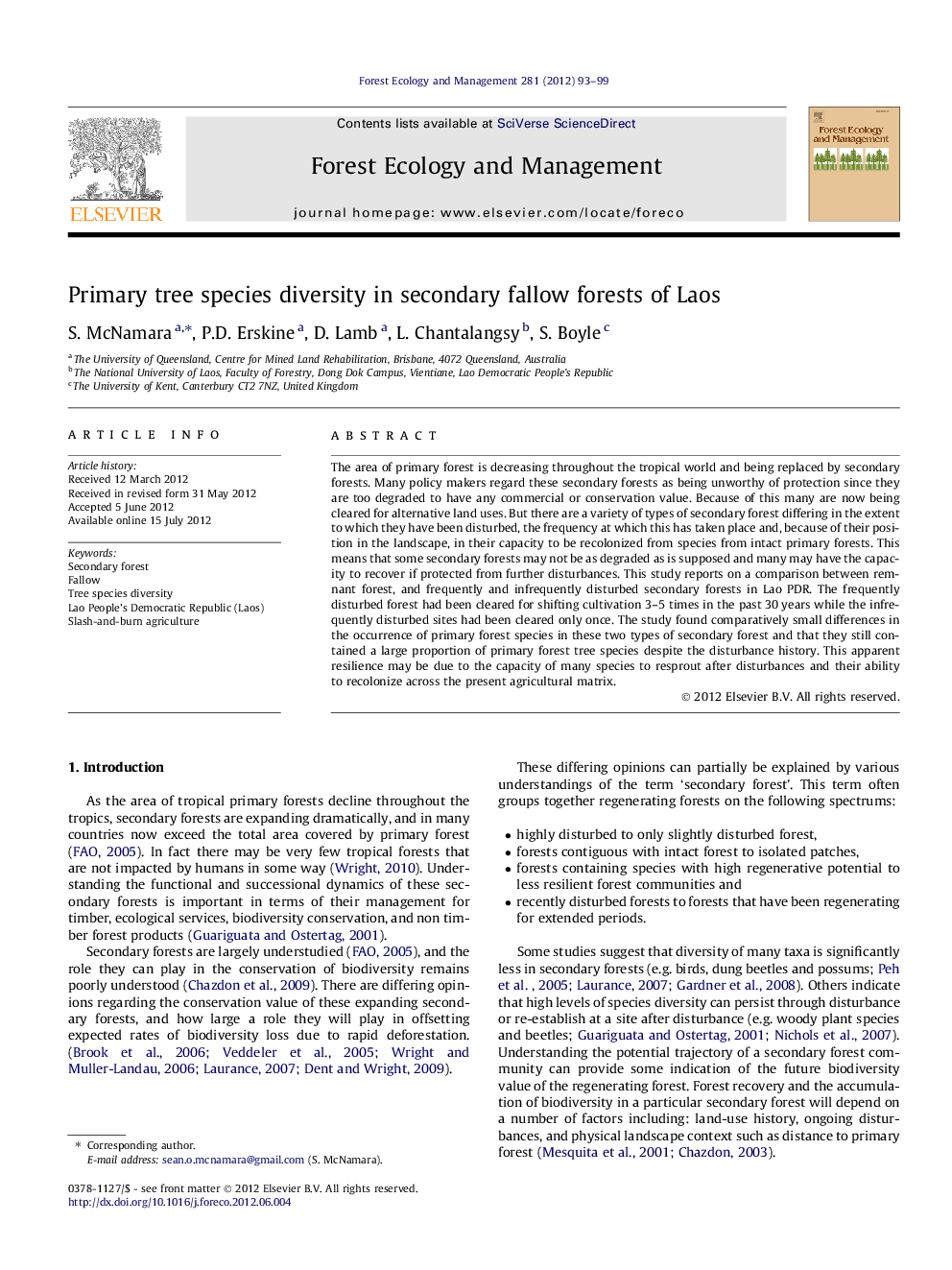| کد مقاله | کد نشریه | سال انتشار | مقاله انگلیسی | نسخه تمام متن |
|---|---|---|---|---|
| 87131 | 159233 | 2012 | 7 صفحه PDF | دانلود رایگان |

The area of primary forest is decreasing throughout the tropical world and being replaced by secondary forests. Many policy makers regard these secondary forests as being unworthy of protection since they are too degraded to have any commercial or conservation value. Because of this many are now being cleared for alternative land uses. But there are a variety of types of secondary forest differing in the extent to which they have been disturbed, the frequency at which this has taken place and, because of their position in the landscape, in their capacity to be recolonized from species from intact primary forests. This means that some secondary forests may not be as degraded as is supposed and many may have the capacity to recover if protected from further disturbances. This study reports on a comparison between remnant forest, and frequently and infrequently disturbed secondary forests in Lao PDR. The frequently disturbed forest had been cleared for shifting cultivation 3–5 times in the past 30 years while the infrequently disturbed sites had been cleared only once. The study found comparatively small differences in the occurrence of primary forest species in these two types of secondary forest and that they still contained a large proportion of primary forest tree species despite the disturbance history. This apparent resilience may be due to the capacity of many species to resprout after disturbances and their ability to recolonize across the present agricultural matrix.
► We investigate forest tree diversity in secondary seasonally dry tropical forest.
► We use the juvenile cohort of primary species as the basis for analysis.
► High levels of diversity were found in secondary forest 10 years post clearing.
► Disturbance intensity has a lesser impact on diversity than expected.
► These secondary forests may be less degraded than typically supposed.
Journal: Forest Ecology and Management - Volume 281, 1 October 2012, Pages 93–99